About
Welcome!
Our goal is to make the CVFS data as easy to use as possible. Whether you are an experienced CVFS data user, or a new user, we hope this page provides a helpful overview.
What is the Chitwan Valley Family Study (CVFS)?
- The CVFS studies family change by following whole families over time for more than two decades, no matter where they go or what they do.
- CVFS features panel measures of communities, land use, flora diversity, and consumption practices.
- It is a comprehensive mixed method panel study of individuals, families, and communities in the western Chitwan Valley of Nepal.
Where does the CVFS take place?
Nepal
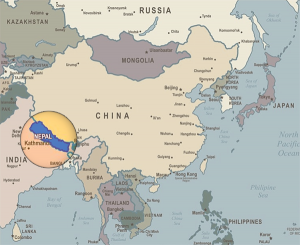 High Himalayas and deep river valleys and poor transportation infrastructure prevented social interaction across groups within Nepal for centuries.
High Himalayas and deep river valleys and poor transportation infrastructure prevented social interaction across groups within Nepal for centuries.- This made Nepal one of the most socially heterogeneous places on earth, even though it is a small country between India and China.
- Nepal was never a colony and remained isolated until the 1950s, when the Hindu King opened the country to foreigners for the first time.
- Changes started slowly, but by the 1970s the first roads began to link parts of the country together.
- By the 1990s, when the CVFS was launched the speed of change was growing faster and began to influence every dimension of social life.
Chitwan
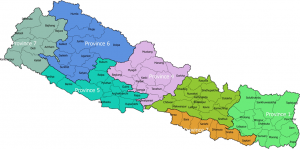 In the 1960s Nepal’s King cleared many of the jungles in the Chitwan Valley to make new farm lands available to families from the Hills and Mountains.
In the 1960s Nepal’s King cleared many of the jungles in the Chitwan Valley to make new farm lands available to families from the Hills and Mountains.- Resettlement to Chitwan brought together many different Nepalese families, representing many different histories and cultures, all into one place.
- By the 1980s the first roads connecting Nepal from the eastern border to the western border and north to Kathmandu were completed and connected in Chitwan.
- This transformed once isolated, remote Chitwan into the transportation hub of all Nepal.
- Changes followed at a very rapid pace by the 1990s, and many of those changes were entirely outside the control of the families living in Chitwan.
Chitwan Valley Family Study — Launch
 The CVFS launched in 1995 with a systematic selection of 171 neighborhoods and neighborhood histories of all changes in access to transportation, jobs, markets, schools, health care, and other government services from 1950-1995.
The CVFS launched in 1995 with a systematic selection of 171 neighborhoods and neighborhood histories of all changes in access to transportation, jobs, markets, schools, health care, and other government services from 1950-1995.- In 1996 CVFS completed 5271 individual interviews with all people ages 15-59 living in those neighborhoods.
- These interviews were explicitly designed to replicate common measures used in many existing family studies and life history calendars documented each respondent’s entire lifetime, including how they came to be in Chitwan.
- In 1996 CVFS also completed 1805 household production and consumption surveys and within household relationship matrices for all residents, including those who were interviewed.
- The initial round of land use mapping from 171 neighborhoods and flora diversity measures from 265 flora plots were also collected in that year.
The CVFS Panel Study
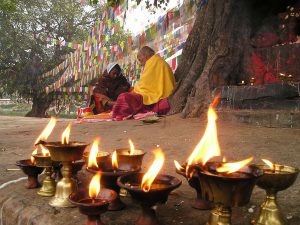 Beginning in February of 1997 the CVFS tracked all households and the individuals from 151 neighborhoods in the CVFS no matter where they moved.
Beginning in February of 1997 the CVFS tracked all households and the individuals from 151 neighborhoods in the CVFS no matter where they moved.- This was accomplished with a Household Registry system that collected monthly updates on demographic events – births, deaths, moves in and out, marriages and divorces.
- The registry included a monthly contraceptive use survey obtained through individual interviews.
- Over time many other studies were added to the CVFS by collecting information from these same families and linking the data together.
- Neighborhood histories were repeated in 2004 and 2015.
- Land use and flora measures were repeated in 1999 and 2006.
- Household production and consumption surveys were repeated in 2001, 2006, and 2016.
- And the population of Chitwan continued to grow, so new individual interview refresher samples were conducted in 2008 and 2016-18.
What kinds of data does the CVFS collect?
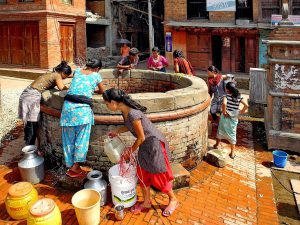 Initial data collection of CVFS included community-level data such as neighborhood, school, health, and bus service histories; household-level data such as information about household farming practices and possessions; and individual-level data such as household resident census and relationship data, information about individual respondents’ childhood experience, non-family experience, childbearing, contraceptive use, religion, marital and family relationships, social networks, and attitudes.
Initial data collection of CVFS included community-level data such as neighborhood, school, health, and bus service histories; household-level data such as information about household farming practices and possessions; and individual-level data such as household resident census and relationship data, information about individual respondents’ childhood experience, non-family experience, childbearing, contraceptive use, religion, marital and family relationships, social networks, and attitudes.- Over time, new questions were added at the household-level in areas such as income, assets, consumption, exit from farming, migration, remittances, and resource use. New questions were also added at the individual-level in areas such as values and beliefs about societal attributes, modern family life, family change, and freedom and equality.
- Additional surveys, such as assessments of land use, flora samples, household agriculture and migration, women’s time use, and elderly health and wellbeing are also periodically administered.
What makes the CVFS unique and useful?
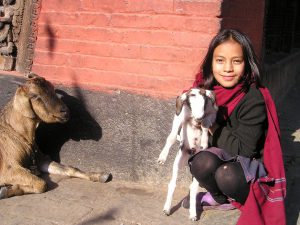 The CVFS follows whole families over time, measuring changes in the experiences of each individual family member.
The CVFS follows whole families over time, measuring changes in the experiences of each individual family member.
- This design enables intergenerational research on parents and children.
- This design enables research on husband-wife marital dynamics across time.
- This design enables research on siblings.
- The CVFS follows all migrants, including international migrants.
- The CVFS features comprehensive and continuous linked community histories.
- The CVFS contextual measures include land use, flora diversity and flora abundance over time.
- The CVFS household measures include family consumption, agricultural production, wealth, income, and migrant remittances.
- The CVFS features repeated measures of individual’s attitudes and beliefs.
- The CVFS include full life histories of experiences with mental disorders, measured using a clinically validated diagnostic interview.
- CVFS child health measures in blood-based anemia along with anthropometrics and interview measures.
How much data has the CVFS collected?
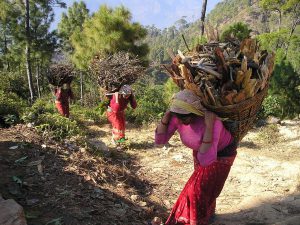 Today, the data include full life histories for more than 10,000 individuals, tracking and interviews with all migrants, continuous measurement of community change, more than 20 years of demographic event registry, and linked human and natural systems.
Today, the data include full life histories for more than 10,000 individuals, tracking and interviews with all migrants, continuous measurement of community change, more than 20 years of demographic event registry, and linked human and natural systems.
How is the CVFS funded?
The CVFS is supported by multiple grants from:
- The National Institute of Child Health and Human Development
- The National Science Foundation
- The National Institute of Mental Health
- The Department for International Development and Economic and Social Research Council
- Michigan’s Population Studies Center
What can you do with CVFS data?
 The breadth and depth of the data allow for endless possibilities!
The breadth and depth of the data allow for endless possibilities!- View Publications to see the variety of studies conducted with CVFS data
- The CVFS is the single best source of social science data on the Chitwan Valley of Nepal
Still want to learn more?
If you still have questions, please visit the Data and Frequently Asked Questions. You may also Contact Us with your questions.

